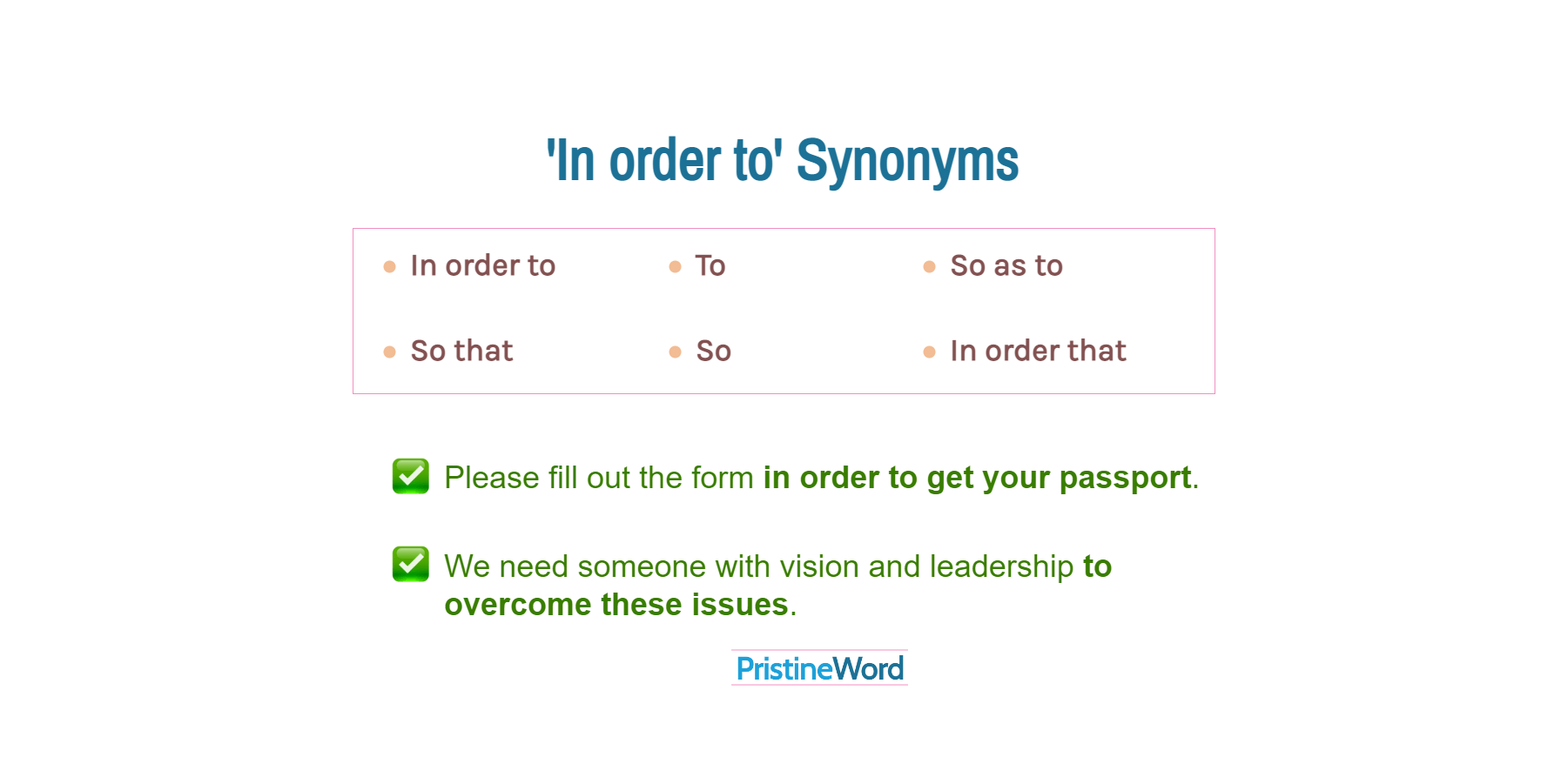You can use "in order to", "to", or "so as to" to express purpose.
To express purpose, you can use these prepositions. They have an infinitive as its object:
- "in order to"
- "to"
- "so as to"
You can alternatively rewrite your sentence to use a subordinating conjunction (followed by a subject and a verb):
- "so that"
- "so"
- "in order that"
Instead of "in order to", you can use one of the following prepositions. All of them are followed by a gerund, not an infinitive, and are somewhat formal:
- With the intention of
- With the aim of
- With a view to
- For the purpose of
'In order to', 'To', and 'So as to'
"To" is a more informal, shortened version of "in order to". "To" and "in order to" are prepositions that have an infinitive as its object. Both are equally possible in spoken and written English.
We need someone with vision and leadership to overcome these issues.
We need someone with vision and leadership in order to overcome these issues.
Be aware, however, that we generally use "in order to" in negative sentences. We don't commonly use "to" by itself here:
In order not to take unnecessary risks, they conducted a market analysis.
Note that you can use "in order to" at the beginning of your sentence. Similarly, you can start a sentence with "to" or "so as to".
"So as to" is much more formal and less common than "in order to". We don't use "so as to" in colloquial English language.
Two different applications can share information so as to complete a business process.
My brother went to the park so as to play with their friends.
To be more concise, use "to". In more formal situations or to be more explicit, use "in order to". More sporadically, in formal writing, you can use "so as to". In negative sentences, use "in order not to" or, in very formal language, "so as not to".
Subordinating Conjunctions to Express Purpose
As mentioned above, "in order to", "to", or "so as to" must be followed by an infinitive.
Please fill out the form in order to get your passport.
However, when expressing purpose, we usually can rewrite a sentence to include a subordinating conjunction ("so that", "so", or "in order that") instead of "in order to". Remember, a conjunction is followed by a clause (a subject and a verb).
Please fill out the form so that you can get a passport.
You can use "so that" in a wider ranger of contexts. In very informal situations, you can find "so" instead. Less frequently, in very formal situations or academic writing, you can choose "in order that".

